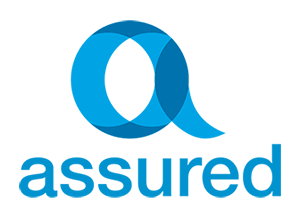Using a mortgage offset account could potentially cut years off your home loan and slash the amount of interest you pay at the same time. Offset accounts are simply transaction or savings accounts that are linked to your home loan.
The balance you have in your account at any time is ‘offset’ each day against your mortgage balance. Essentially, the lender deducts your savings balance from your outstanding home loan balance before calculating the amount of interest due.
The result is that you pay less interest on your home loan.
How does an offset account work?
The objective of an offset account is to put your savings to good use reducing your interest costs without actually putting that cash into your mortgage account. So if your mortgage balance is $300,000 and you have $10,000 in your offset account, the bank only charges you interest on $290,000.
The majority of home mortgages are calculated using principal and interest repayments. This means a portion of your monthly payment is comprised of a component to cover the interest charges and the remaining portion is paid off your loan to reduce your balance.
When you have an offset account linked to your home loan, you’re able to change the interest-to-principal ratio in each repayment you make. Essentially, you pay less interest, which means a larger portion of every repayment goes towards reducing your balance faster.
Is a savings account better?
It’s common for many people to assume their extra cash would be better off sitting in a savings account or paid directly off the mortgage balance.
However, if your home loan doesn’t have a redraw facility, you won’t be able to access those additional funds if you need them later. Likewise, your bank might charge steep fees for redrawing extra cash from your mortgage account, making it a less attractive option to withdraw your cash.
You might also think that leaving your extra cash in a savings account might be better for you. Yet the amount of interest paid on your savings is often significantly lower than the interest you pay on your home loan balance.
Besides, you also have to pay tax on any interest you earn on savings. The tax man isn’t able to tax you on the savings you make on your reduced home loan interest costs though.
Can all home loans be linked to an offset account?
Not all lenders offer the option of an offset account to their customers. However, there are lenders that will allow you to offset 100% of the funds in the linked account, while others may specify only a partial offset percentage will apply to your mortgage balance.
There are also some lenders that only allow you to apply a mortgage offset account on certain types of home loans. For example, your bank may only allow you to link an offset account to a variable rate home loan but not to a fixed rate home loan.
Using an offset account to your advantage
The key to maximizing the benefits available on your offset account is to understand how banks calculate your interest charges. While you might see one figure for your interest cost on your bank statement at the end of each month, the reality is that banks calculate your interest on your outstanding balance at the end of each day.
Knowing that your interest is being calculated daily, it pays to try and keep the balance in your offset account as high as possible. One possible way of doing this is to have your salary or wages paid directly into your offset account.
While your income is sitting in the account, it’s actively reducing the amount of interest you pay.
Your offset account is still a valid transaction account, so you can access the money in there using a debit card or via online banking if you need to pay bills or living expenses.
Alternatively, you have the option of using a credit card that offers interest-free days to pay for your living expenses. The idea behind using your credit card to cover your costs instead of the cash in your offset account is to take advantage of the interest-free days available.
For example, the total amount of income going into your offset account each month might be $5,000. However, the amount you spend on your credit card to cover your expenses each month might only be $2,000. You simply repay the amount from your income amount that has been sitting in your account all month.
As long as you repay the amount shown on your credit card statement in full on or before the due date, you shouldn’t be charged any interest on the amount you spent. Yet, because you left your entire income sitting in the offset account throughout the month, you effectively reduce the amount of interest the bank is able to charge you.
Over a period of time, you should notice the balance in your offset account increases. As long as you continue to spend less than you earn each month, your savings will grow, which compounds the effect of reducing your interest costs even faster.
While mortgage offset accounts can be an extremely powerful financial tool when they’re used correctly, it’s important to stay disciplined with your money. The easiest way to determine whether an offset account is right for your personal situation is to discuss your options with a mortgage broker before making a decision.



